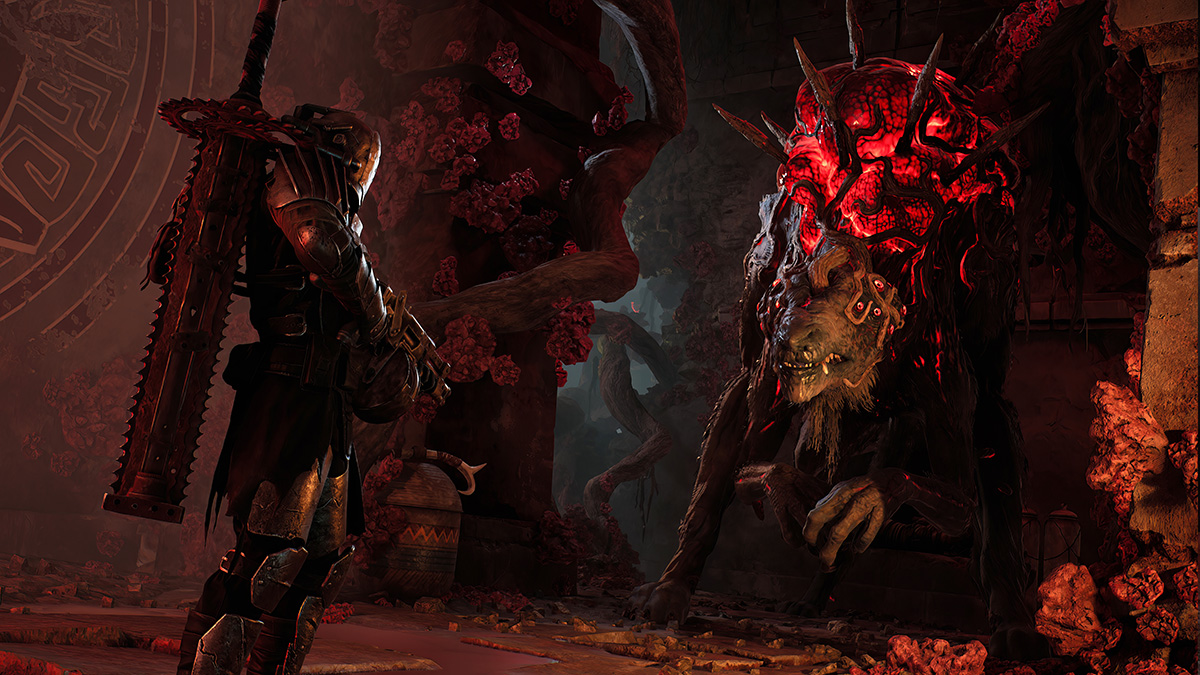Remnant 2 follows 2023’s unfortunate pattern of games with shoddy PC ports, with even beefy rigs managing only the barest 60 FPS when they should realistically be rocking far more. I don’t seem to be the only one trying to increase FPS in Remnant 2.
My PC isn’t top of the line across the board, it can still handle almost any other game I can throw at it in ultrawide and hit at least 80 frames with higher-than-average settings. I’ve had no such luck with Remnant 2, but I have at least been able to make it playable by tweaking specific settings and taking steps to lighten the load on my rig. This guide will go into settings and steps you can also take to help fix low FPS in the game.
How to Increase FPS in Remnant 2

Remnant 2‘s PC performance is a little sad. Even taking all the steps I’ll lay out in this guide, I can hardly manage 60 fps on Medium and Low settings. I know I’m not the only one, as a Reddit thread posted by one of the developers at Gunfire Games (not an engineer in charge of the tech, but an official source nonetheless) has users describe their own specs — up to and including 4090, 13900k users — seeing less than ideal frames.
Tip 1: Use DLSS, FSR, and Other Upscaling Software
In the same Reddit thread mentioned above, the dev from Gunfire Games said that Remnant 2 was built with upscaling in mind. I can attest to how much of a difference it makes, so much so that I don’t recommend getting Remnant 2 on PC if your graphics card doesn’t have the likes of DLSS, FSR, or any other upscaling technology.
Hopefully, the devs can make some adjustments under the hood to alleviate this issue, but this is what we’re stuck with in the meantime.
Tip 2: Update Your Graphics Drivers
Yes, I know this is literally one of the first tips on every “improve your FPS guide” ever written. Still, after installing Nvidia’s latest drivers, 536.67, at the time of writing, I was able to get about 15% better performance much more consistently.
I can’t speak to AMD cards, but if you’re running a 3080 like I am, or anything more recent, then going to the nVidia Drivers site and doing a clean install could give you some FPS relief.
Tip 3: Play Without Background Programs Running
I love having a stream or some other content going on my second monitor when I play games, but having anything else open tends to cause Remnant 2 to chug and stutter. This is probably partly due to Chrome being open, though my 32 GB of RAM should be enough for even that memory-hungry program, as I can play more demanding games with Chrome doing as it pleases.
In short, if you want to play the game at the highest possible framerate, don’t have anything else running in the background besides maybe something like MSI Afterburner and maybe Discord. Too many browser tabs, other game launchers, and especially anti-virus software will need to be paused to improve FPS.
Tip 4: Don’t Alt-Tab, Even During Startup
Few PC games enjoy being alt-tabbed, but Remnant 2 has been notoriously finicky about it for me. That includes during the game’s startup sequence. If I want the best, most consistent framerate, I need to press Play in Steam, and then take my hands off my keyboard and mouse and let the game get past the logo splash screen.
Tip 5: Restart Your Computer if It Chugs Too Much
Yes, turning your PC off and on again is still a great way to get some extra performance out of your games, Remnant 2 included. Restarting the game rarely gave me the relief I needed, but doing a full reset and keeping other programs off usually got me the frames I expected.
Tip 6: Lower Your Settings
I saved this tip for last because the performance gains were minor, even on the settings you’d think to change. The biggest improvements came from:
- Reducing Shadows
- Reducing Post-Processing
- Reducing Effects
- Lowering your resolution is also valuable, as going from 1440p to 1080p will always provide some relief, though it might look a bit grainy on larger monitors.
Most other settings only gave back about a frame, and even then, only sometimes.
Hopefully, these tips will help you improve FPS in Remnant 2, and, more hopefully, the dev team can patch the game down the line to address many of the performance issues. It’s too bad because the game is really fun, but I half-dread booting it up because I might have to do so several times to even get it in a playable state. For content on the actual gameplay of Remnant 2, check out our guides on the N’Erud Seeker’s Key, how to unlock the door in the Vault of the Formless, and more in our Remnant 2 guides hub.







Published: Jul 24, 2023 04:30 pm